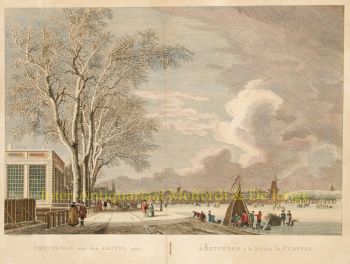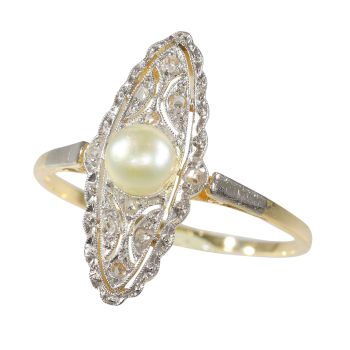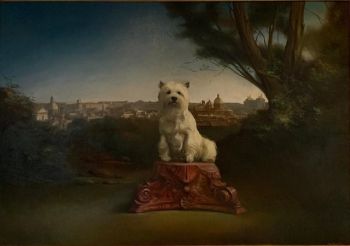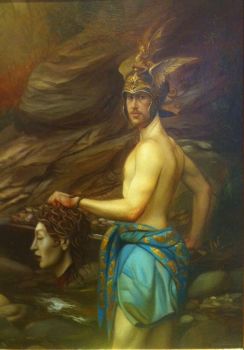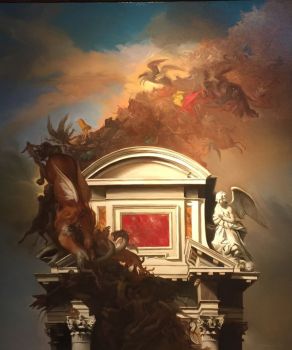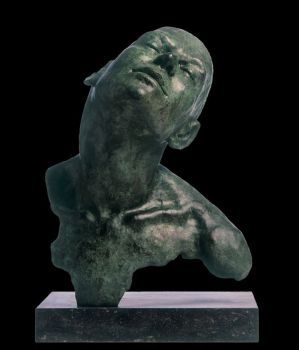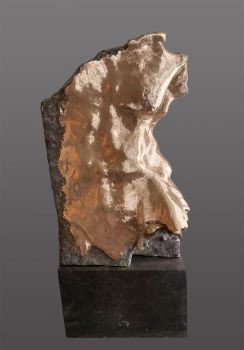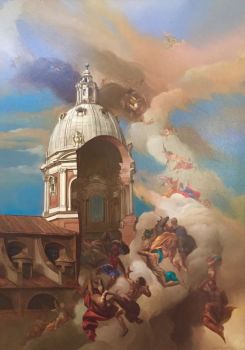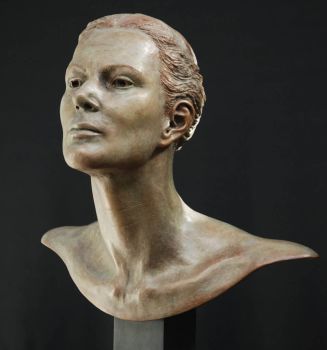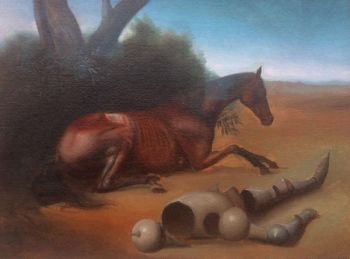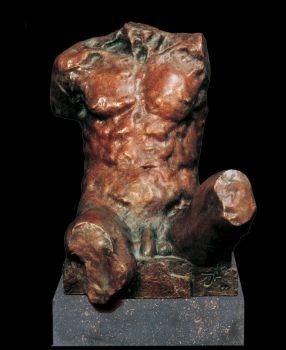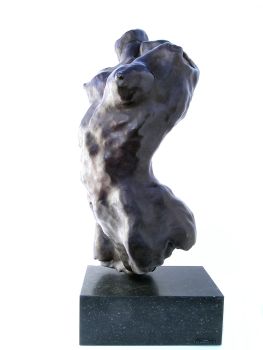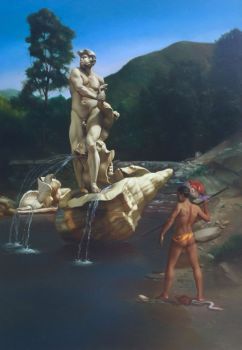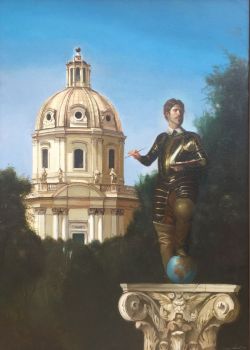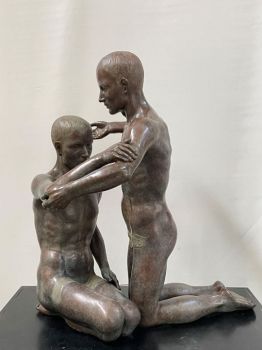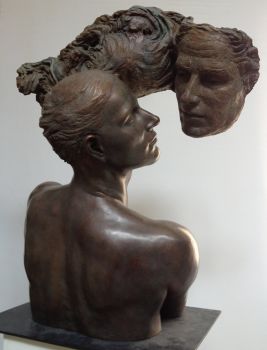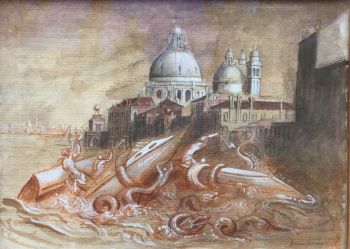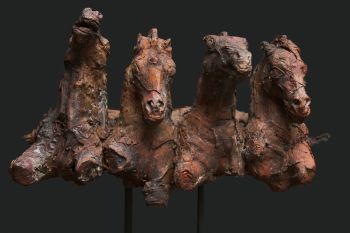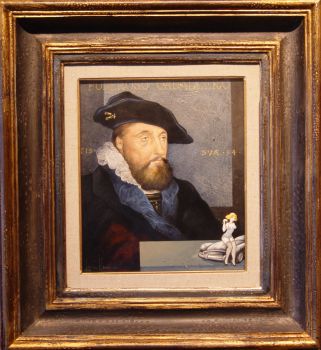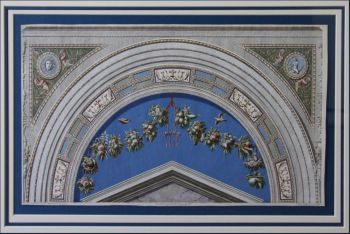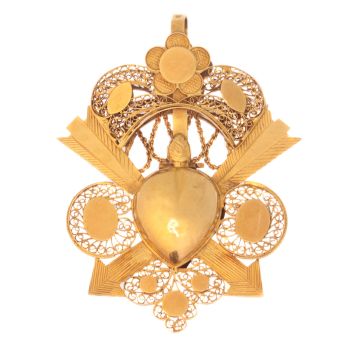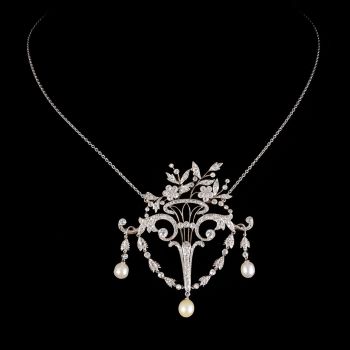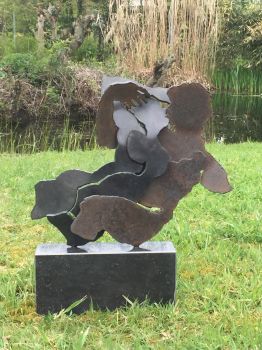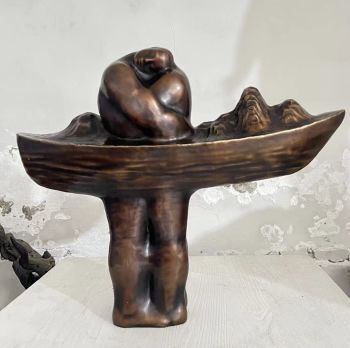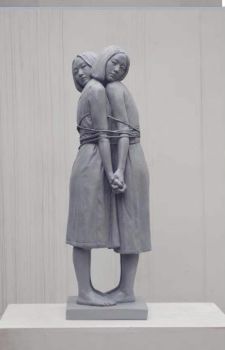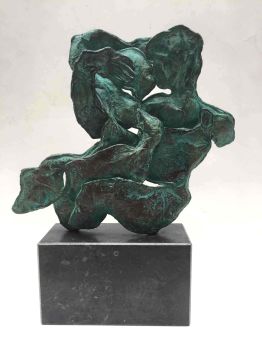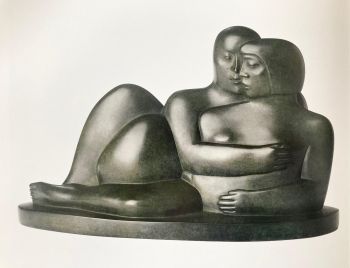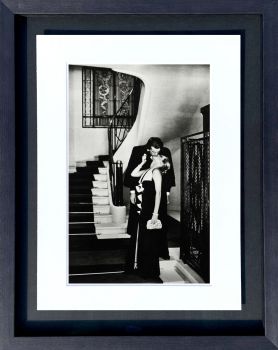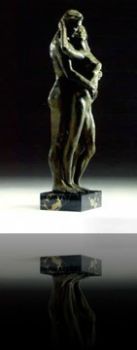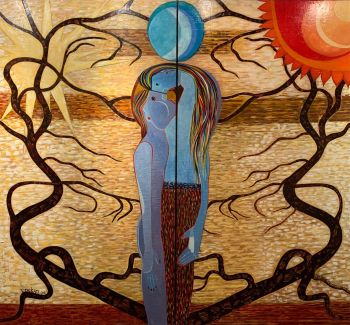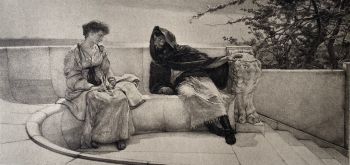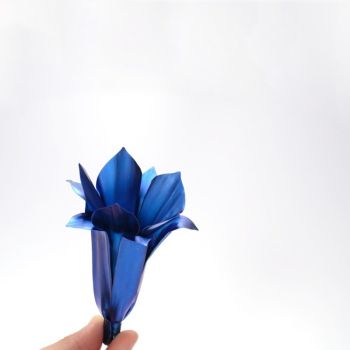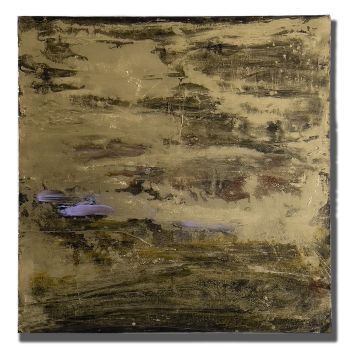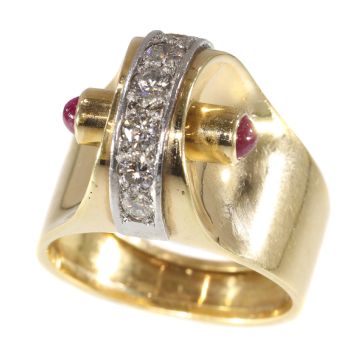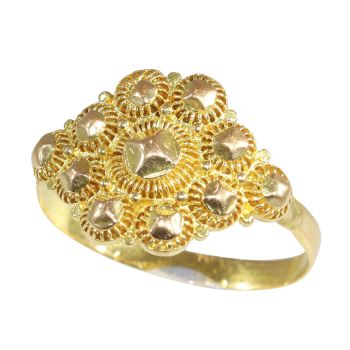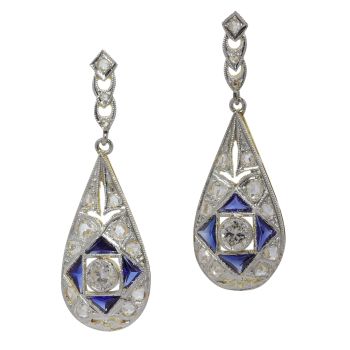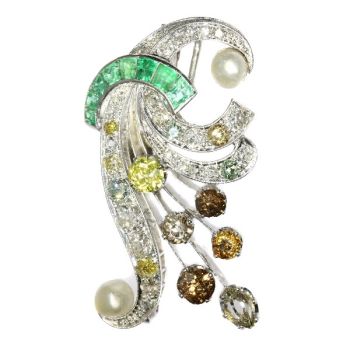Vintage quality cameo in gold mounting romantic scenery can be worn as pendant or brooch 1950
Unknown artist
Adin Fine Antique Jewellery
- About the artwork
Antique jewelry object group
combined brooch-pendant
Condition
very good condition
more info on our condition scale
Country of origin
unknown
Style
Vintage
See also: vintage jewelry
more info on styles
Period
ca. 1950
Events & facts of this era, poetry of this era, fashion of this era.
Source of inspiration
Love and romance
Theme
Romantic scene of love couple
Material
14K yellow gold (touchstone tested)
more info on precious metals
Technique
Cameo is a method of carving, or an item of jewellery or vessel made in this manner. It features a raised (positive) relief image. There are three main materials for Cameo carving; Shells or Agate (called a Hardstone cameo), and glass. Cameos can be produced by setting a carved relief, such as a portrait, onto a background of a contrasting colour. This is called an assembled cameo. Alternately, a cameo can be carved directly out of a material with integral layers or banding, such as (banded) agate or layered glass, where different layers have different colours. Sometimes dyes are used to enhance these colours. Cameos are often worn as jewellery. Stone cameos of great artistry were made in Greece dating back as far as the 6th century BC. They were very popular in Ancient Rome, and one of the most famous stone cameos from this period is the Gemma Claudia made for the Emperor Claudius. The technique has since enjoyed periodic revivals, notably in the early Renaissance, and again in the 17th, 18th and 19th centuries.
Hallmarks
"K14" indicating 14K gold
more info on hallmarks
Dimensions
5,40 cm (2,13 inch) x 4,70 cm (1,85 inch)
see picture with a ruler in millimeters and inches
Weight
16,80 gram (10,80 dwt)
Adin Reference Nº
23271-0583
Copyright photography
Adin, fine antique jewellery
Additional information
our latest acquisitions
jewelry glossary
wall of fame
visit us in Antwerp
subscribe to our mailinglist
- About the artist
It might happen that an artist or maker is unknown.
Some works are not to be determined by whom it is made or it is made by (a group of) craftsmen. Examples are statues from the Ancient Time, furniture, mirroirs, or signatures that are not clear or readible but as well some works are not signed at all.
As well you can find the following description:
•“Attributed to ….” In their opinion probably a work by the artist, at least in part
•“Studio of ….” or “Workshop of” In their opinion a work executed in the studio or workshop of the artist, possibly under his supervision
•“Circle of ….” In their opinion a work of the period of the artist showing his influence, closely associated with the artist but not necessarily his pupil
•“Style of ….” or “Follower of ….” In their opinion a work executed in the artist’s style but not necessarily by a pupil; may be contemporary or nearly contemporary
•“Manner of ….” In their opinion a work in the style of the artist but of a later date
•“After ….” In their opinion a copy (of any date) of a work of the artist
•“Signed…”, “Dated….” or “Inscribed” In their opinion the work has been signed/dated/inscribed by the artist. The addition of a question mark indicates an element of doubt
•"With signature ….”, “With date ….”, “With inscription….” or “Bears signature/date/inscription” in their opinion the signature/ date/ inscription has been added by someone other than the artist
Are you interested in buying this artwork?
Related artworks
- 1 - 4 / 12
- 1 - 4 / 24
Fontana
Flower basket brooch-pendant1900 - 1905
Price on requestAns Hemke-Kuilboer Juwelier & Antiquair
1 - 4 / 24Lawrence Alma-Tadema
"Caracalla and Geta: Bear Fight in The Coliseum, AD 203" 1907
Price on requestGallerease Selected
 Curated by
Curated byDanny Bree
1 - 4 / 24- 1 - 4 / 24
- 1 - 4 / 12









